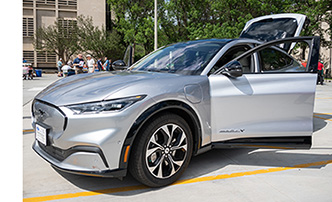NDDOT Website Update
- In February of 2025, with the change in federal administration, the NEVI program was put on pause while the U.S. Department of Transportation reviewed and updated the rules and guidance previously developed for the program.
- As of August 2025, the U.S. DOT released new rules and guidance that supersedes the previous rules. North Dakota DOT is currently reevaluating our approach to the program so that it aligns with current federal rules but also allows the deployment of chargers that better reflect the specific features of North Dakota.
- Our approach will focus first on building chargers near I-94 and I-29 and will then focus on building chargers along public roads in other areas of the state. However, NDDOT is in the process of reevaluating how specifically these two phases will be structured and will provide more information and opportunities for engagement as this process continues.
Please check back to this site for the current status of the program as it progresses. We will also provide program announcements to all email addresses registered with the program, and welcome you to register if you have not done so already.

